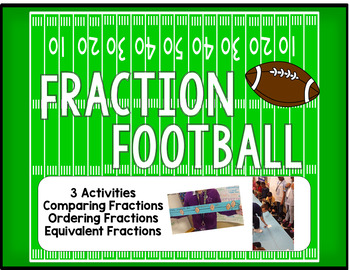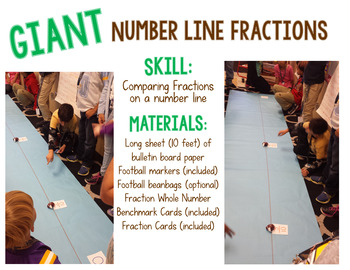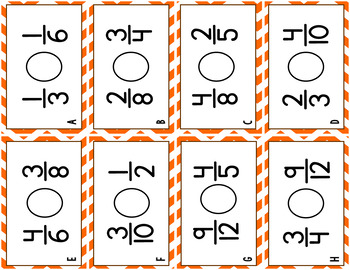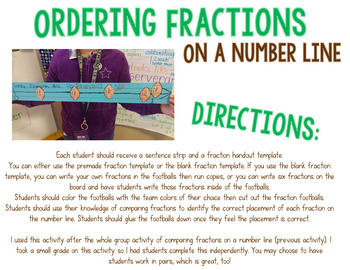Fraction Football Activity Bundle
Elementary Brown-ies
542 Followers
Grade Levels
3rd - 6th
Subjects
Resource Type
Standards
CCSS4.NF.A.1
CCSS4.NF.A.2
Formats Included
- PDF
Pages
40 pages
Elementary Brown-ies
542 Followers
What educators are saying
This was a great resource packed with many activities. It went perfectly with a classroom transformation.
Description
This engaging activity bundle includes three fraction activities that are all football themed. The bundle contains activities covering the following fourth grade skills:
Comparing Fractions
Ordering Fractions on a Number Line
Equivalent Fractions
Models and Number Lines
This activity bundle also includes classroom pictures, specific activity instructions, material lists for each activity, tips, and answer keys. Check out the preview!
Students will be engaged by using life-sized number lines, interactive football counters, football game simulation, creating their own fraction number lines, and solving math task cards.
This is just the beginning of this fraction football bundle! I will be uploading three more activities soon, so if you buy the bundle now at the original price, you will be locked in for when the updates go live :) The next time I update the product, the price will increase!
Comparing Fractions
Ordering Fractions on a Number Line
Equivalent Fractions
Models and Number Lines
This activity bundle also includes classroom pictures, specific activity instructions, material lists for each activity, tips, and answer keys. Check out the preview!
Students will be engaged by using life-sized number lines, interactive football counters, football game simulation, creating their own fraction number lines, and solving math task cards.
This is just the beginning of this fraction football bundle! I will be uploading three more activities soon, so if you buy the bundle now at the original price, you will be locked in for when the updates go live :) The next time I update the product, the price will increase!
Total Pages
40 pages
Answer Key
N/A
Teaching Duration
3 days
Report this resource to TPT
Reported resources will be reviewed by our team. Report this resource to let us know if this resource violates TPT’s content guidelines.
Standards
to see state-specific standards (only available in the US).
CCSS4.NF.A.1
Explain why a fraction 𝘢/𝘣 is equivalent to a fraction (𝘯 × 𝘢)/(𝘯 × 𝘣) by using visual fraction models, with attention to how the number and size of the parts differ even though the two fractions themselves are the same size. Use this principle to recognize and generate equivalent fractions.
CCSS4.NF.A.2
Compare two fractions with different numerators and different denominators, e.g., by creating common denominators or numerators, or by comparing to a benchmark fraction such as 1/2. Recognize that comparisons are valid only when the two fractions refer to the same whole. Record the results of comparisons with symbols >, =, or <, and justify the conclusions, e.g., by using a visual fraction model.





